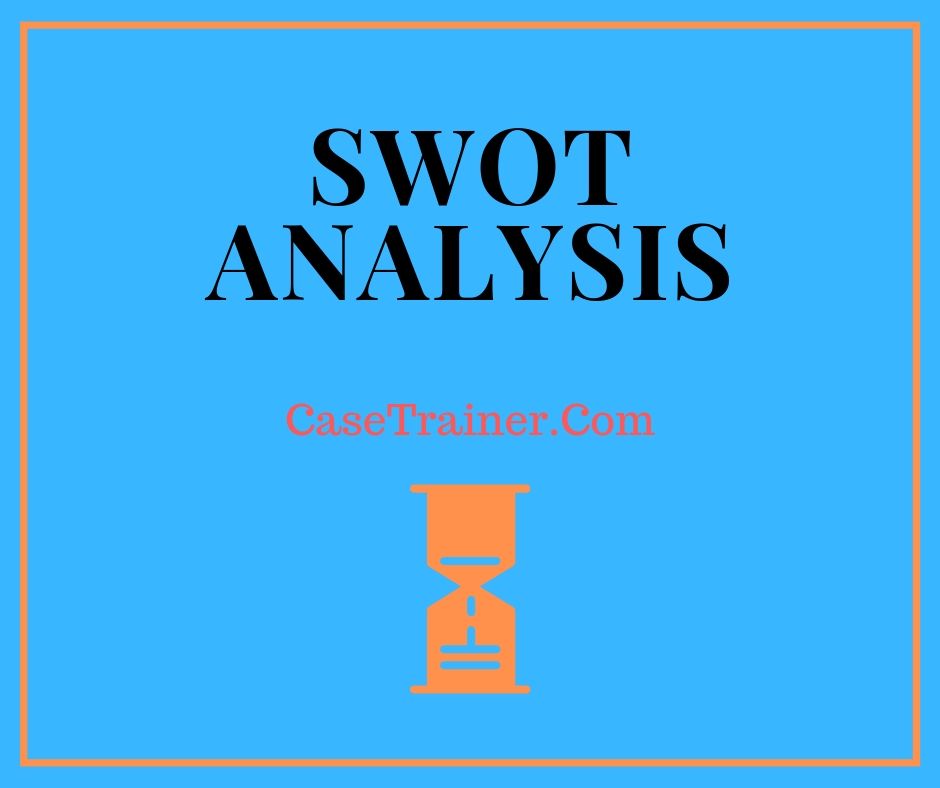Supply Chain Distribution Optimization Case Study Solution and Analysis
Introduction
Supply Chain Distribution Optimization Case Study Solution is the largest publishing business with a highest market share in the China's book retail market. CMP has actually become a specialized details company and a large detailed Science and Innovation publishing company through the integration of print media, audio-visual media and the network media.
Critical Concerns
Although, Supply Chain Distribution Optimization Case Study Solution has invested its 60 years journey smoothly, being a successful publishing home, however, the changing macro market trends and forces bring certain difficulties to the publishing market in general and CMP in particular. These factors consist of;
• Entrance of the brand-new publishing firms in the market.
• Declining development of the publishing market.
• Market saturation.
• Introduction of digital publishing techniques
• Improvement of science and technology.

The change of the macro markets have raised several concerns to the management at CPM that what could be the future of CMP in this situation? Do the long valuable experience, technical resources and the capabilities of the business could be used to strive for the future advancement unceasingly? How could the business sustain its long term competitive position in future?
Situational Analysis
Internal Analysis
SWOT Analysis
Strengths
Supply Chain Distribution Optimization Case Study Analysis has particular strengths that can be utilized to minimize the threats, get rid of the weak point and obtain the chances. Strengths of CMP are offered as follows;
• The long term experience of Supply Chain Distribution Optimization Case Study Solution in the publishing industry i.e. 60 years allows the business to provide high quality products at a lower cost utilizing its previous experiences.
• The technical resources and abilities produced by its effective journey offer a competitive benefit to CMP.
• Huge product portfolioof CMP helps it to diversify its threat and offer high value to its customers.
• Strong financial position enables the business to consider a number of advancement chances with no fear of raising fund externally.
Weak points
Along with the strengths, the company has particular weak points which could increase restrictions for the business in executing its advancement program. The weak points of Supply Chain Distribution Optimization Case Study Help are provided as follows;
• Despite of being a science and technology publishing firm, the business still has standard methods ofpublishing which are not compatible with the growing technological shift.
• CMP highly relies over the Chinese markets for its development. It ought to propose certain expansion strategies to avoid its dependence over the Chinese markets to achieve long term growth.

Opportunities
Although, the development of the publishing industry is declining considering that 2008, affecting Supply Chain Distribution Optimization Case Study Solution also, however the development could be restored by availing certain chances presented in the market. The marketplace opportunities for CMP consist of;
• The business might likewise introduce Digital Publishing by using its long term technical experience and a strong client recognition in the market.
• CMP could consider an advancement program through the growth towards foreign markets in order to minimize its reliance over Chinese markets by utilizing its large financial resources.
Dangers
The altering macro trends in the market and increasing competitors in the publishing industry has actually presented certain dangers to Supply Chain Distribution Optimization Case Study Analysis including;( Gurel, 2017).
• Intro of digital publishing i.e. digital libraries could lead to declining market share of Supply Chain Distribution Optimization Case Study Solution due to the consumer shift towards digital libraries.
• The existence of large number of competitors in the publishing market increase the danger for CMP to lose its competitive position in the market, as competitors can get a strong customer base by using certain techniques like aggressive promotion, quality products, etc.
• Entrance of new publishing firms in the industry together with presence of high competitors increases the risk of losing the client base.
Financial Analysis.

Due to lack of data, the financial ratios of CMP could not be calculated. It might be examined from the Appendix III that the yearly overall profits of Supply Chain Distribution Optimization Case Study Analysis during the period 2000-2012 are growing at a high development rate, revealing that the yearly demand of the products of CMP is growing and the company is rather effective in attracting a big number of customers at a prospective price.
Together with it, the 2nd graph which shows the yearly development in the Supply Chain Distribution Optimization Case Study Analysis total properties, reveals that the business is quite efficient in including worth to its properties through its earnings. The growth in assets shows that the overall worth of the firm is also increasing with increasing the total profits. (Unidentified, 2013).
Another financial analysis of the business utilizing the given data might be the analysis concerning the distribution of overall revenues of the business. Major part of the profits of CMP originates from the sales of its released books i.e. 64% as displayed in the Case Appendix V. The business could move towards other business segments with a possible development to achieve its future development objective.
PESTEL Analysis
PESTEL analysis could be conducted to discover the numerous external forces impacting the efficiency of the business and the current trends in the external environment of the business. A short PESTEL analysis of the business is offered as follows; (Alanzi, 2018).
Political.
As the publishing sector could have a significant impact on the frame of mind of individuals about the communist ideology of the government, therefore, the publishing sector is highly supervised and guided by the Promotion Department of the Communist Party of China. It could be said that the overall political forces affecting CMP service are high. The federal government policies regarding the publishing sector are likewise increasing with the passage of time.
Affordable.
Financial forces impacting the publishing sector in basic and the Supply Chain Distribution Optimization Case Study Analysis in particular includesthe rates of paper, the income level of customers, the inflation rate, and the general GDP growth of the nation. All these forces combine effect the demand for the publishing market. Along with it, the financial policies connected to the import of books impact the overall company at CPM. China's financial conditions are rather favorable for CMP with high GDP growth and consumer income level.
Social and Demographical.
The customer choices are moving towards digital publishing rather than the standard was of publishing. In this regard, CMP should focus on digital publishing to meet the changing customer preferences.
Technological.
Technological forces impacting the CMP consist of the technological improvement in the reading methods and so on. Improvement of science and technology in addition to the rise of digital publishing could reduce the demand for the CMP products, if specific actions would not be taken soon.
Environmental.

Ecological forces impacting Supply Chain Distribution Optimization Case Study Analysis consists of the issues of environmental communities over the usage of paper in publishing books. The paper utilized in the books while publishing is needed to be disposable and the ink used while publishing needs to not be damaging for the environment.
Legal.
Legal policies for the publishing sector at whole are high. The legal policies relating to the publishing sector is managed by the General Administration of Press and Publication. Publishing Ordinance 1997 needs the publishers to be authorized initially by the Federal government to be gone into in the publishing market. The regulation forbids direct involvement of foreign entities and people in the publishing sector.
Industry Analysis (Porter's 5 Forces Model).
Porter's Five Forces Design might be used to examine the attractiveness of the publishing market China. A short analysis of the Porter's Five Forces is provided as follows;.
Threat of New Entrants.
Dangers of new entrants in the Chinese Publishing Industry is moderate. The possible development in the market tends to attract new entrants to the publishing market. However, the presence of intense competitors and the requirement of huge capital tends to demotivate brand-new entrants to go into in the marketplace.
Hazard of Substitution.
Threat of Substitution is high for the Chinese Publishing Industry. The alternative products for the released documents is the documents provided in the virtual libraries on specific sites. The changing customer choices towards digital knowing increase the hazard of substitution for the market.
Competitive Competition.
Competitive competition in the publishing market is high. The presence of large number of consumers in the Chinese Publishing Industry like CIP, PTP and so on tends to produce high competitive rivalry for CMP. Together with it, brand-new entrants are likewise entering into the marketplace increasing the competitors for CMP.
Bargaining Power of Provider.
The significant providers of the Supply Chain Distribution Optimization Case Study Analysis consist of the providers of the paper for releasing documents. As CMP is the largest publisher in the Chinese Publishing Market, therefore the overall bargaining power of provider for CMP is low.
Bargaining Power of Purchaser.
Haggling power of purchaser in the publishing industry is high. Due to the existence of a large number of publishers in the Chinese market and the marketplace saturation, the buyers needs high quality documents at competitive rates.
Competitors Analysis.
CMP runs in a highly competitive market with the existence of a great deal of competitors. Nevertheless, the business has a competitive position in the market with the greatest market share in the Chinese publishing market. Significant rivals of Supply Chain Distribution Optimization Case Study Analysis include;.
• Chemical Market Press (CIP).
• Posts and telecommunication Press (PTP).
Chemical Market Press (CIP).
CIPis among the close competitors of CMP. Founded in the same duration, CIP releases similar type of books. For a large time period, CIP held the largest market share, and still ranks second and 3rd in numerous market sectors, with a major focus on educational publications. CIP functions as a danger for CMP as it could wean its market share due to its long term competitive background. CIP is concentrated on digital publishing and might wean the market share of Supply Chain Distribution Optimization Case Study Help easily in the existing market circumstance.
Posts and telecommunication Press (PTP).
It was likewise established in the same period as Supply Chain Distribution Optimization Case Study Analysis and CIP. It is also one of the popular players in the publishing market with an annual total incomes of RMB 550 million in 2010.
Alternatives
Alternative-1: Broaden towards New Markets
Pros
• Lowering dependence over the Chinese markets.
• Increasing number of Consumers
• Development chances.
• Preventing the effect of market saturation in the Chinese publishing market.
Cons

• Use of prospective resources in expansion.
• Threat of failure in new markets.
• Time consuming.
Alernative-2: Present Digital Publishing
Pros
• Sustaining customer base.
• Approaching new markets.
• Easy to present utilizing existing abilities.
• Low danger of Failure.
• Low requirement for funds.
• Increased item portfolio offers high value to customers.
Cons
• Competitors in the market by CIP, who has prior focus on the digital publishing.
• Shift of focus from the core service segments to the new one can lead the company to lose demand of its products in the market.
Suggestions
As the choices are shifting towards digital publishing and the business require an immediate service to avoid the declining industry growth. The business could also think about the expansion program after the success of its digital publishing program.
Implementation
In order to present digital publishing in its product portfolio, the business must initially collects the information connected to the customer need, the potential markets, the government policies and the data related to the rivals presented in the market. After that, the business must decide one possible section for its initial offering. It ought to collect research that how it could differentiate its digital publishing from the existing rivals' items. The actions above the business should go for the initial offering. If the preliminary offering shows a success, the company must choose the other markets. In this way the business would have the ability to execute its digital publishing program.
Conclusion
Although, the development of the publishing market is declining given that 2008, revealing a hazard to the business's long term existence, however the circumstance can be controlled by considering a development plan in the future. The company might think about presenting digital publishingin its existing market to implement its development program at immediate basis and to avoid the threat of failure for entryway in the brand-new markets.

